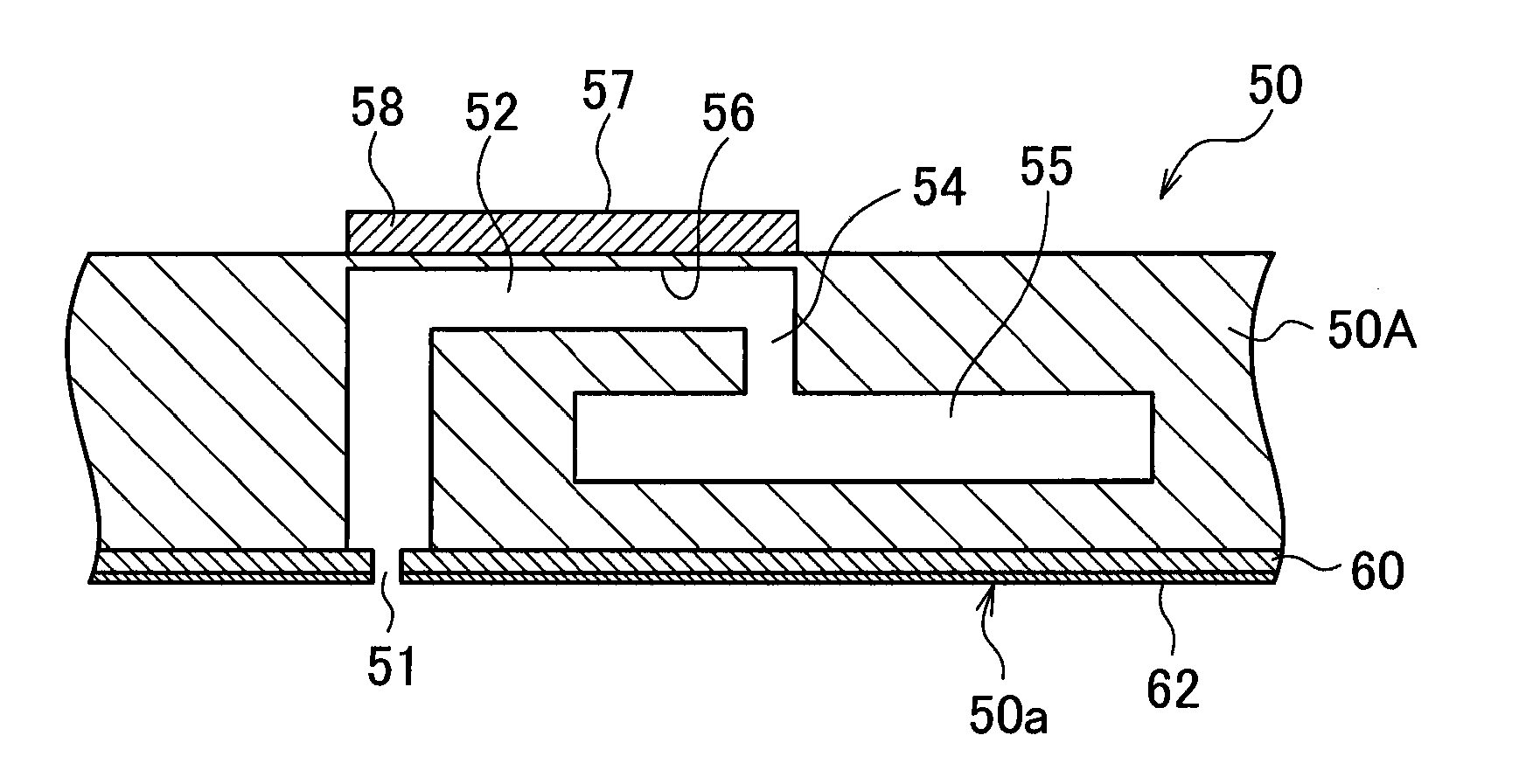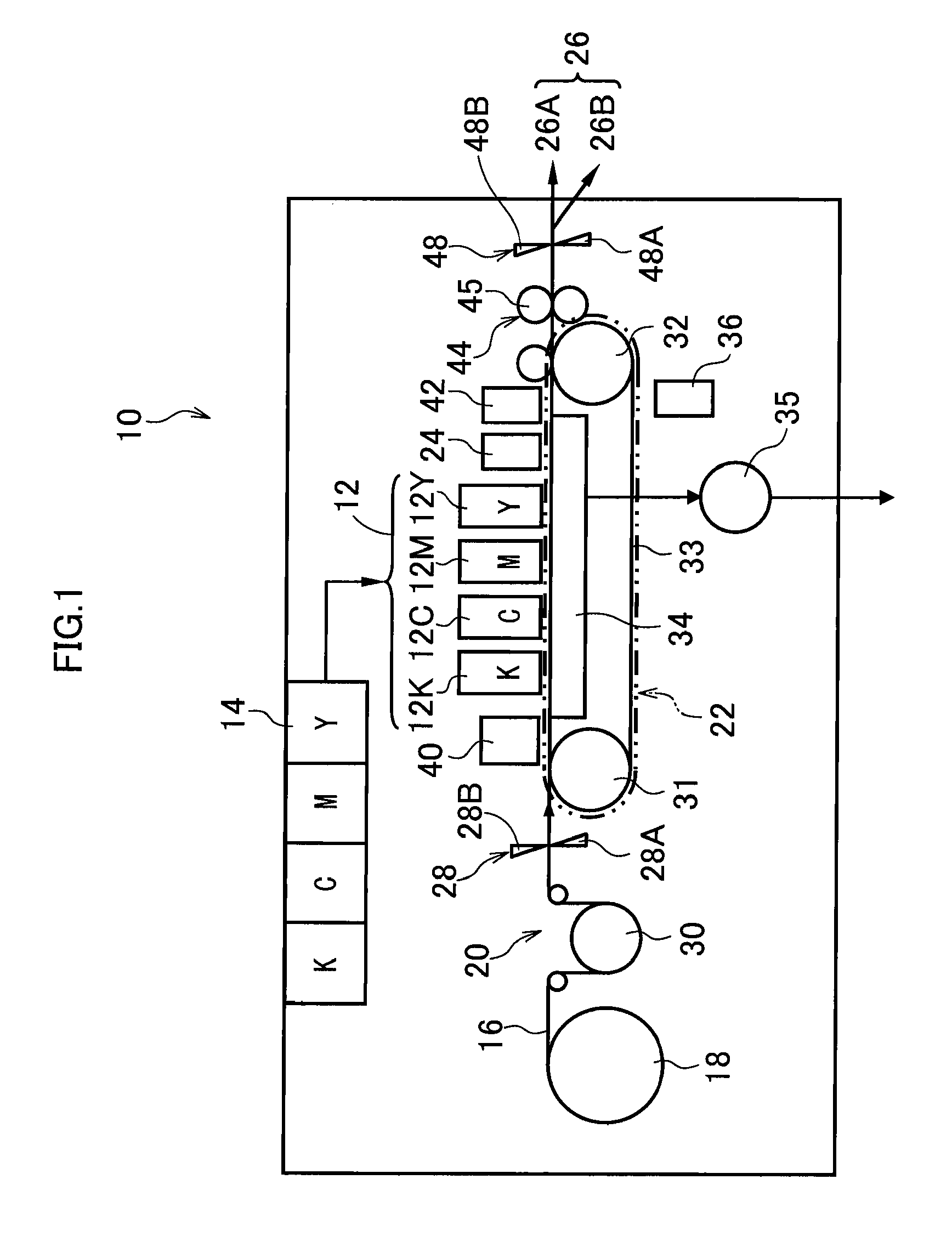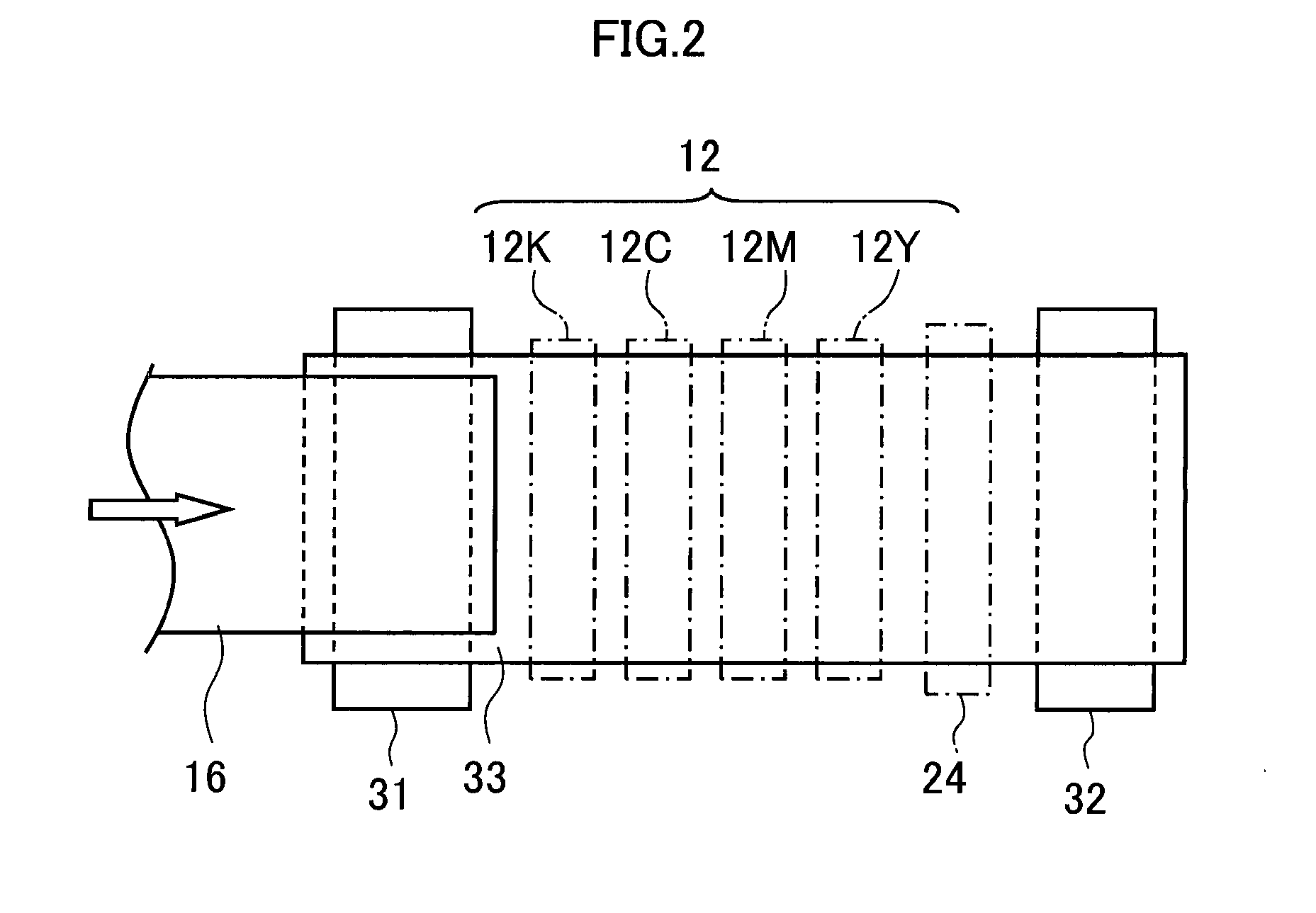Liquid-Repellent Film Forming Method, Inkjet Head and Inkjet Recording Appparatus
a liquid-repellent film and film forming technology, applied in the field of liquid-repellent film forming methods, inkjet head and inkjet recording apparatus, can solve the problems of deterioration of image quality, decline of film properties, and lack of sufficient bonding sites (hydroxyl groups: oh groups), so as to prevent the decline of image quality and reduce the amount of liquid. , the effect of high resistan
- Summary
- Abstract
- Description
- Claims
- Application Information
AI Technical Summary
Benefits of technology
Problems solved by technology
Method used
Image
Examples
examples
Practical Example A
[0105]In Practical Example A hereby described, a liquid-repellent film was actually formed on a surface of a nozzle plate by means of the liquid-repellent film forming method according to the present invention, but the present invention is not limited to this example.
[0106]A pressure-resistant glovebox with hermetic sealing capability was prepared and the required experimental equipment was placed therein, whereupon the interior of the glovebox was filled with nitrogen. The experimenters carried out all of the following experiments using the rubber gloves of the glovebox.
[0107]Firstly, a solution of the raw material (1-hexadecene) of the liquid-repellent film was prepared, whereupon the solution was bubbled with impurity-free nitrogen gas to remove the dissolved oxygen in the solution.
[0108]On the other hand, a nozzle plate (with a natural oxide film thereon) which had undergone cleaning in a cleaning step was subjected to a hydrogen termination process by immersi...
example b
Practical Example B
[0112]In Practical Example B, the surface stability (oxidization rate, carbon contamination, etc.) of a nozzle plate on which a liquid-repellent film had been formed by the heating method in Practical Example A was tested.
[0113]The test involved leaving the nozzle plate of Practical Example on which the liquid-repellent film had been formed in accordance with Practical Example A, at room temperature and atmospheric pressure for 350 hours. Alongside this, a nozzle plate of Comparative Example 1 which had only been subjected to a hydrogen termination process using hydrofluoric acid (an aqueous HF solution) was also left at room temperature and atmospheric pressure for 350 hours. The static angle of contact of pure water was measured over time, on the surface of the nozzle plate of Practical Example on which the liquid-repellent film had been formed, and on the surface of the nozzle plate of Comparative Example 1 which had undergone hydrogen termination.
[0114]FIG. 6 ...
example c
Practical Example C
[0115]In Practical Example C, the alkali resistance was compared, as one example of liquid resistance, between a nozzle plate of Practical Example on which the liquid-repellent film based on silicon-carbon bonds had been formed in accordance with Practical Example A, and a nozzle plate of Comparative Example 2 having a liquid-repellent film based on siloxane bonds (Si—O).
[0116]In order to strengthen siloxane bonds, the liquid-repellent film of Comparative Example 2 was formed by firstly forming a SiO2 film as an underlying film by CVD on the surface of the nozzle plate, as in Japanese Patent Application Publication No. 2009-029068 described above. Then, a fluorocarbon liquid-repellent film material containing chlorosilane as a reactive group was caused to react with the underlying film also by a CVD method, to form a liquid-repellent film bonded to the nozzle plate through siloxane bonds.
[0117]Two samples, the nozzle plate of Practical Example and the nozzle plate...
PUM
 Login to View More
Login to View More Abstract
Description
Claims
Application Information
 Login to View More
Login to View More - R&D
- Intellectual Property
- Life Sciences
- Materials
- Tech Scout
- Unparalleled Data Quality
- Higher Quality Content
- 60% Fewer Hallucinations
Browse by: Latest US Patents, China's latest patents, Technical Efficacy Thesaurus, Application Domain, Technology Topic, Popular Technical Reports.
© 2025 PatSnap. All rights reserved.Legal|Privacy policy|Modern Slavery Act Transparency Statement|Sitemap|About US| Contact US: help@patsnap.com



